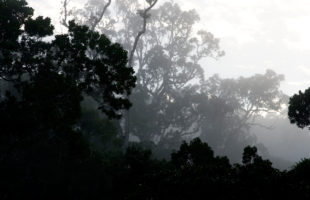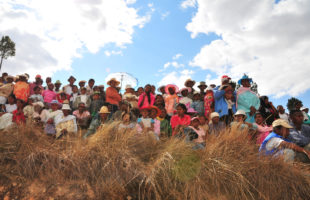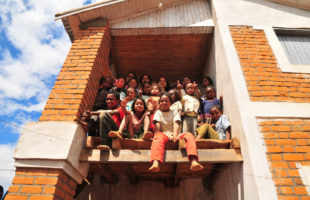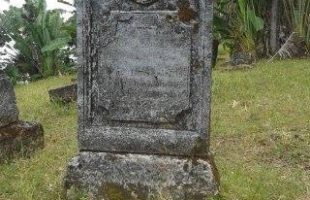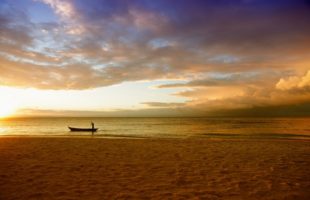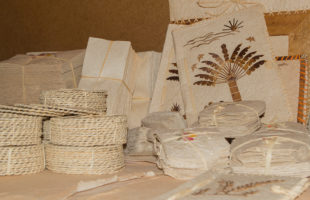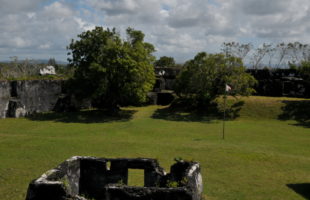Many myths and legends surround the Kalanoro, the small forest spirits of Madagascar. The ethnic groups of the Betsimisaraka, the Sakalava, and the Bara are said to be early humans similar to the legendary Vazimba. The Tanala call them Fahasivy. Kalanoro is particularly small, not even one meter tall. Despite their small size, they are unusually strong. Kalanoro wear their …
LesenSchlagwort-Archiv: Tradition
Why the roots of the baobabs reach for the sky
A Malagasy legend tells that there were times when the trees could still walk. At that time there was also a large lake whose water was so clear and calm that it lay there like a mirror. Whenever they passed the lake, the baobabs stopped. They became sad when they saw their own appearance reflected in the water. The other …
LesenRanoro, the Daughter of the Water
Many centuries ago, in the times of the Vazimba, there existed the Zazavavindrano, the daughters of water. One of them was Ranoro. This is her story. One day, a young man from the Betsileo ran to the Mamba River in the central highlands of Madagascar. The man’s name was Andriambodilova. In the middle of the river, he spotted a beautiful …
LesenThe art of speech: Kabary
In Madagascar time often plays no role, but talking to each other extensively does. One form of speech is particularly popular on the Red Island: the Kabary. Kabary is the word for a speech for which many people are together in the same place. At the same time, it is a very traditional form of oral history that can be …
Lesen10 good reasons to travel to Madagascar
#1 Baobabs: Madagascar’s legendary Baobab Alley is located in the west of the island. The mighty trees with their impressive silhouettes are famous all over the world. On Madagascar there are seven different species of Baobabs, on earth, there are only eight species in total. Discover the Baobab forests of Andavadoaka and visit the “Mother of the forest” in Tsimanampetsotsa! …
LesenTaboos and traditions: The Fady in Madagascar
As a traveller in Madagascar, you will hear about fadys sooner or later. Fady is the Malagasy word for taboo and probably derives from the Indonesian “pady”. But taboo is not the only meaning of this word, it is also used to call something sacred. Fadys are rules that concern situations as well as people, animals, locations or a certain …
LesenPirates’ cemetery St. Pierre
Legend tells that there was the famous pirates‘ republic of Libertalia at Madagascar’s eastcoast in 17th and 18th century, more precise at Nosy Boraha (St. Marie). Fallen over and skew, century old tombstones at the forlorn cemetery St. Pierre, near the biggest city oft he island, Ambodifotatra, bear witness at least to an adventurous time at the Malagasy island. Famous …
LesenWhere the name Vazaha for white people comes from
Once upon a time, long ago, a young king and his wife lived on the west coast of Madagascar, in Menabe. This king loved to speak before his people and to give Kabarys. One day, during one of his Kabarys, a baby started crying. When it wouldn’t stop and the mother couldn’t calm the baby, the king got angry. How …
LesenAntemoro paper
Actually, the Antemoro ethnic group lives in southeast Madagascar, around Manakara and Farafangana. In the southern highlands, however, there is a small factory in the middle of Ambalavao, which still shows the production of the handmade paper called Antaimoro, which was once typical of the traditional Antemoro and still is today. Originally the Antemoro came from Arabs, who brought the …
LesenFort Manda
The ruin of Fort Manda is about three kilometres northeast of the coastal town of Mahavelona (Foulpointe) and can be easily reached by foot from there. Directly from the end of the town it is only half as far. A visit should take at least half a day, the entrance fee is about 3000 Ariary. Fidel, the guide and guardian …
Lesen MADAMAGAZINE Your Magazine about Madagascar
MADAMAGAZINE Your Magazine about Madagascar
